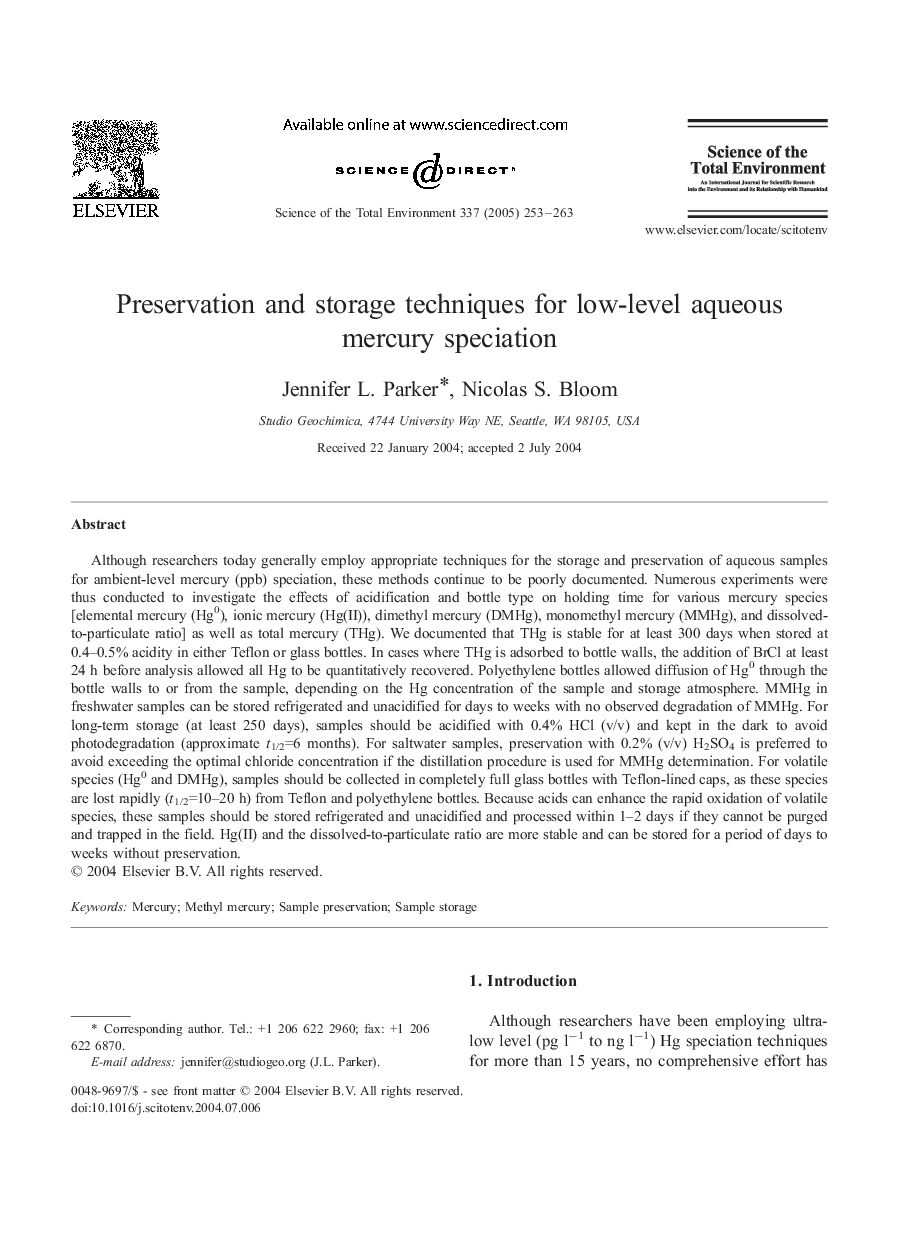| کد مقاله | کد نشریه | سال انتشار | مقاله انگلیسی | نسخه تمام متن |
|---|---|---|---|---|
| 10111016 | 1620002 | 2005 | 11 صفحه PDF | دانلود رایگان |
عنوان انگلیسی مقاله ISI
Preservation and storage techniques for low-level aqueous mercury speciation
دانلود مقاله + سفارش ترجمه
دانلود مقاله ISI انگلیسی
رایگان برای ایرانیان
کلمات کلیدی
موضوعات مرتبط
علوم زیستی و بیوفناوری
علوم محیط زیست
شیمی زیست محیطی
پیش نمایش صفحه اول مقاله

چکیده انگلیسی
Although researchers today generally employ appropriate techniques for the storage and preservation of aqueous samples for ambient-level mercury (ppb) speciation, these methods continue to be poorly documented. Numerous experiments were thus conducted to investigate the effects of acidification and bottle type on holding time for various mercury species [elemental mercury (Hg0), ionic mercury (Hg(II)), dimethyl mercury (DMHg), monomethyl mercury (MMHg), and dissolved-to-particulate ratio] as well as total mercury (THg). We documented that THg is stable for at least 300 days when stored at 0.4-0.5% acidity in either Teflon or glass bottles. In cases where THg is adsorbed to bottle walls, the addition of BrCl at least 24 h before analysis allowed all Hg to be quantitatively recovered. Polyethylene bottles allowed diffusion of Hg0 through the bottle walls to or from the sample, depending on the Hg concentration of the sample and storage atmosphere. MMHg in freshwater samples can be stored refrigerated and unacidified for days to weeks with no observed degradation of MMHg. For long-term storage (at least 250 days), samples should be acidified with 0.4% HCl (v/v) and kept in the dark to avoid photodegradation (approximate t1/2=6 months). For saltwater samples, preservation with 0.2% (v/v) H2SO4 is preferred to avoid exceeding the optimal chloride concentration if the distillation procedure is used for MMHg determination. For volatile species (Hg0 and DMHg), samples should be collected in completely full glass bottles with Teflon-lined caps, as these species are lost rapidly (t1/2=10-20 h) from Teflon and polyethylene bottles. Because acids can enhance the rapid oxidation of volatile species, these samples should be stored refrigerated and unacidified and processed within 1-2 days if they cannot be purged and trapped in the field. Hg(II) and the dissolved-to-particulate ratio are more stable and can be stored for a period of days to weeks without preservation.
ناشر
Database: Elsevier - ScienceDirect (ساینس دایرکت)
Journal: Science of The Total Environment - Volume 337, Issues 1â3, 20 January 2005, Pages 253-263
Journal: Science of The Total Environment - Volume 337, Issues 1â3, 20 January 2005, Pages 253-263
نویسندگان
Jennifer L. Parker, Nicolas S. Bloom,